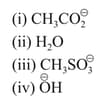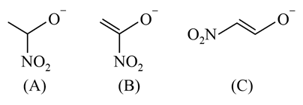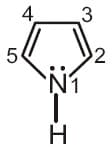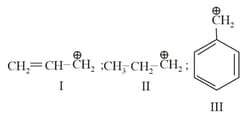EASY
Earn 100
Ionic reactions with organic compounds proceed through:
(A) Homolytic bond cleavage
(B) Heterolytic bond cleavage
(C) Free radical formation
(D) Primary free radical
(E) Secondary free radical
Choose the correct answer from the options given below:
(a)(A) only
(b)(C) only
(c)(B) only
(d)(D) and (E) only
66.45% studentsanswered this correctly
Important Questions on Organic Chemistry- Some Basic Principles and Techniques
MEDIUM
The hyperconjugative stabilities of tert-butyl cation and 2-butene, respectively, due to
MEDIUM
In which of the following molecules, all atoms are coplanar?
MEDIUM
Which of the following molecules is least resonance stabilized?
MEDIUM
In which of the following pairs is more stable than
HARD
A solution of in toluene racemises slowly in the presence of a small amount of SbCl5, due to the formation of :
EASY
The correct statement regarding electrophiles is:
MEDIUM
The correct sequence of reagents for the following conversion will be

HARD
The major products and in the following reactions are

EASY
Consider the following compounds

Hyperconjugation occurs in:
MEDIUM
In which of the following compounds, the bond ionization shall give most stable carbonium ion?
MEDIUM
The compound that is most difficult to protonate is:
EASY
Which of the following statements is not correct for a nucleophile?
MEDIUM
The increasing order of nucleophilicity of the following nucleophiles is;

MEDIUM
The stability of carbocations

follows the order
EASY
Which among the following is a set of nucleophiles?
EASY
Resonance effect is not observed in
EASY
The correct order of stability for the following alkoxides is:

EASY
In pyrrole, the electron density is maximum on

EASY
The order of stability of the following carbocations:

MEDIUM
Consider the above reaction and identify the intermediated ''

